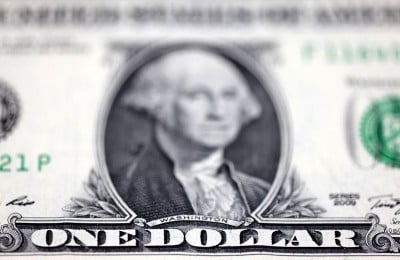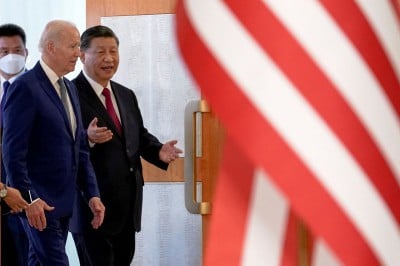 © Reuters. U.S. Dollar banknote is seen in this illustration taken July 17, 2022. REUTERS/Dado Ruvic/Illustration/File Photo CMWAY -0.75% Add to/Remove from Watchlist Add to Watchlist Add Position
© Reuters. U.S. Dollar banknote is seen in this illustration taken July 17, 2022. REUTERS/Dado Ruvic/Illustration/File Photo CMWAY -0.75% Add to/Remove from Watchlist Add to Watchlist Add Position
Position added successfully to:
+ Add another position Close DXY -0.05% Add to/Remove from Watchlist Add to Watchlist Add Position
Position added successfully to:
+ Add another position Close BTC/USD -2.07% Add to/Remove from Watchlist Add to Watchlist Add Position
Position added successfully to:
By Ankur Banerjee SINGAPORE (Reuters) -The dollar was steady on Wednesday in cautious trading ahead of U.S. inflation data later this week that could influence the Federal Reserve's policy, while bitcoin was volatile after a fake social media post rattled markets. The U.S. securities regulator said someone briefly accessed its X social media account and posted a fake message saying it had approved exchange traded funds (ETFs) for bitcoin. The Securities and Exchange Commission (SEC) said it had not yet approved spot bitcoin ETFs.
+ Add another position Close
Bitcoin surged to a fresh 21-month peak of $47,897 after the fake post, before sliding down to below $45,000 within minutes as the SEC deleted and disavowed the information.
The world's biggest cryptocurrency was last down 0.37% at $45,953. Anticipation of a positive SEC decision on ETFs, which is likely to draw billions in new investments, has boosted bitcoin prices in the past two months.
"The reality is most who have followed the saga have moved on and the green light from the SEC is fully priced," said Chris Weston, head of research at Pepperstone.
Weston said the market was focused on when the various ETFs would start to trade, how many bitcoins would be held by the end of the year and the dollar value of inflows over that time.
In the currency market, the dollar remained on the front foot, with the dollar index, which measures the U.S. currency against six rivals, last at 102.53, after gaining 0.215% on Tuesday.
The index is up 1% this month, after dropping 2% in December as traders reassess how steep and early the rate cuts from the Fed are likely to be.
The Fed's surprising dovish tilt in December, when it projected 75 basis points (bps) of rate cuts in 2024, turbo-charged market expectations of easing with traders last month anticipating as much as 160 bps of cuts.
Markets have since reassessed the chances and currently are pricing in 140 bps of cuts this year.
Traders are focused on the release of the U.S. consumer price index report on Thursday to help predict the likelihood of a March rate cut. The report is expected to show headline inflation rose 0.2% in the month and by 3.2% on an annual basis.
"The inflation story has to be viewed in isolation from the growth story and I think inflation on its own isn't enough," said Rob Carnell, Asia-Pacific Head of Research at ING in Singapore.
"It's (easing inflation) a necessary but not sufficient condition to enable you to have aggressive rate cutting."
Fed funds futures indicate a 64% probability of the Fed easing in March versus 80% a week earlier, the CME FedWatch tool showed.
Carnell said an imminent rate cut would need "payrolls falling close to zero or even turning negative and the unemployment rate moving substantially higher from where it is right now." There is "very little evidence that any of that's happening," he said.
In other currencies, the euro was little changed at $1.093. while sterling was last at $1.2699, down 0.05% on the day. The Japanese yen weakened 0.17% to 144.70 per dollar, inching closer to the 145 mark
The Australian dollar rose 0.22% to $0.6703. The currency didn't react much to data earlier showing Australia's inflation slowed to a near two-year low in November.
The softer-than-expected result reinforced expectations that interest rates would not need to rise any further, but markets have already priced this in.
The New Zealand dollar edged 0.09% higher to $0.6242.
Dollar steady as traders await US inflation data, bitcoin volatile


